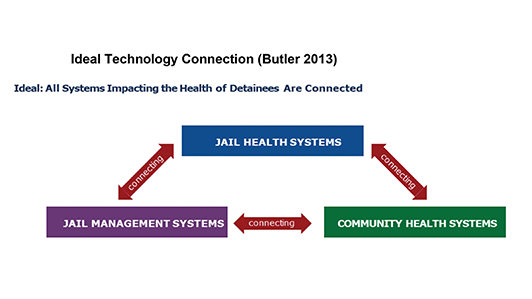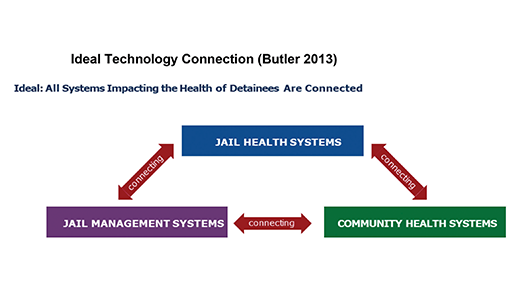This is the second in a series of seven articles about the Travis County Forensic Mental Health Project. This series of articles was named the Best Series of Articles – General Interest by the State Bar of Texas‘ Division III Stars of Texas Bars Awards.
The Travis County Forensic Mental Health Project delivered its recommendations to the Travis County Commissioners in March 2023. The goal of these recommendations is to provide solutions other than jail to address mental health and substance abuse disorders in the county.
Recommendation #1
The report’s first recommendation is to digitize Travis County’s legal infrastructure and add to the existing local health information exchange (HIE) to provide data sharing at all levels.
This recommendation addresses the issues—or “gaps”—of outdated data collection methods and non-standardized datasets.
Many county entities rely on pencil-and-paper data-collection methods, “making data manually intensive to collect and difficult to retrieve and merge with other relevant datasets.”
In addition to outdated collection methods, many of these entities also “collect different and differently defined data.”
“Research1 shows that efficient data sharing among the jails and community health groups is essential to reduce recidivism and provide appropriate continuity of care,” the recommendation document says.
To implement a modern data infrastructure, a three-step approach is recommended. The first step is to establish data utilization agreements (DUAs) among stakeholders (legal, clinical, law enforcement, social service, and education providers).

The second step is for all entities interacting in the criminal, legal, and mental health spaces to go paperless and to ensure these paperless systems are connected to allow data sharing. The Travis County health information exchange, Connexus, can provide a platform from which to launch the larger data infrastructure.
Connexus currently syncs the data from local hospitals and community clinical providers in eight Central Texas counties, including Travis.
“The current major role of the HIE is to push notifications,” the document says. “When a person is admitted to an emergency room, that person’s outpatient provider is automatically notified. The HIE system is limited to individuals who have Medicaid, Medicare, or are uninsured, but could integrate information from all individuals regardless of insurance status.”
A possible next step, the document says, is for the Travis County Sheriff’s Office to connect to the HIE, “thereby integrating the health care provided in the jail to the community care providers.
Counties in Florida, Oregon, Massachusetts, Kentucky, and New York have already integrated their jail health records into their local HIEs.
The final step is to standardize the type of data collected.
“Modernizing data architecture and standardizing data dictionaries would dramatically enhance measuring progress, identifying gaps and barriers, and improving planning for each individual as they enter and exit the system,” the document says. “For the other recommendations in this report to optimally impact the system, a modern data infrastructure is required.”
The estimated cost of digitizing and connecting the county’s legal and health infrastructures is between $10 and $15 million. The estimated implementation time is between one and two years.
Calculating the financial benefit of such a system is difficult, the document says.
“The current system is so dated that a series of expansive, inefficient, labor-intensive work-arounds have been created to provide what data can be harvested to make decisions,” the document says.
Without implementing this first recommendation, “the impact of (the other recommendations) will be difficult, if not nearly impossible, to assess,” the document says.
ENDNOTES
1 Glowalla, Geoffrey, and Vignesh Subbian, “Data Sharing Between Jail and Community Health Systems: Missing Links and Lessons for Re-Entry Success,” https://utexas.app.box.com/s/l9r9h200xcahbp53ef8w5pfj9npudwzu

